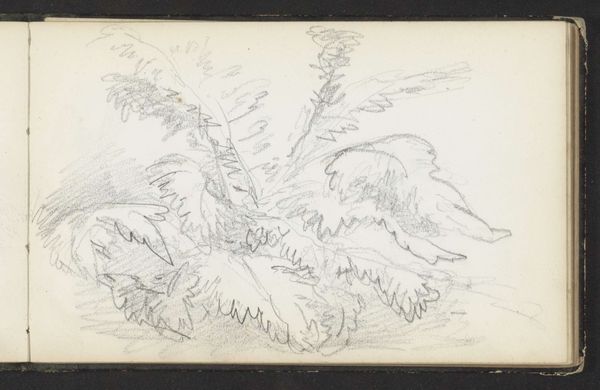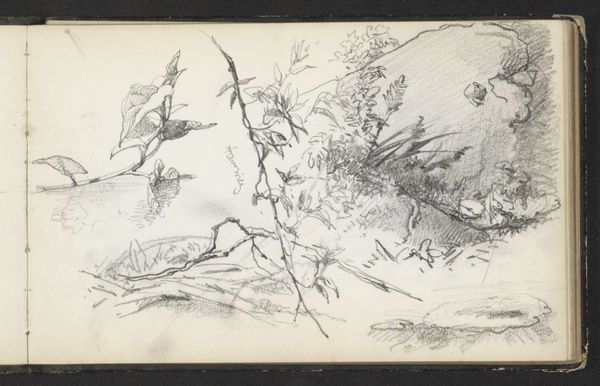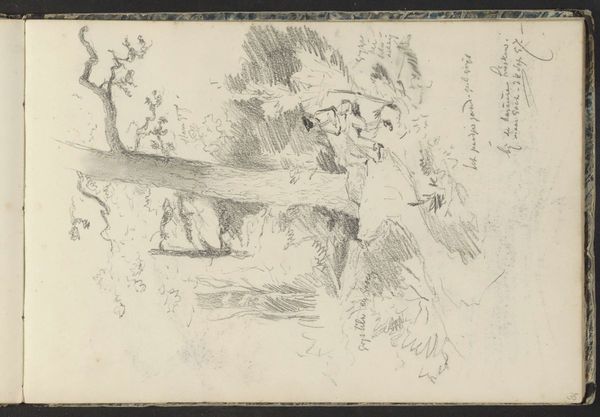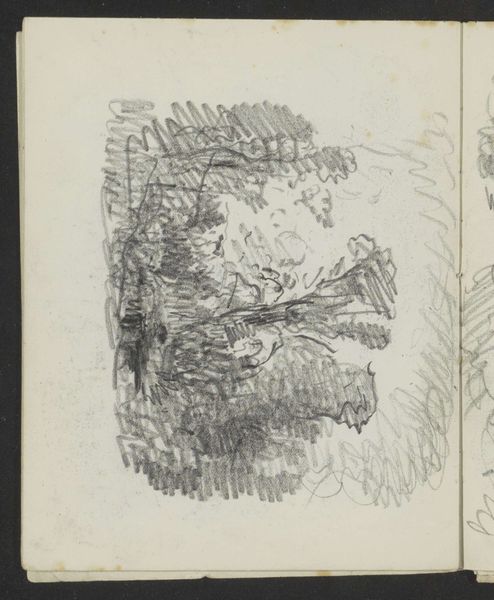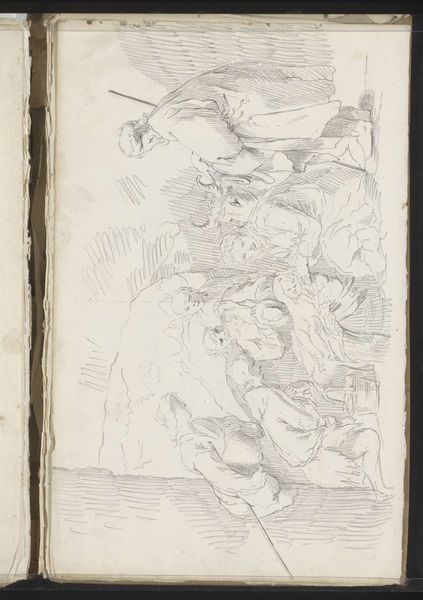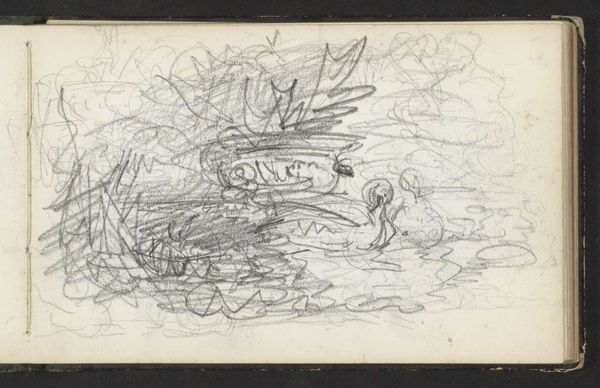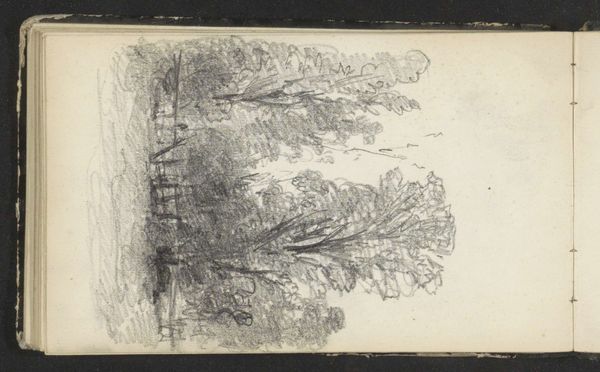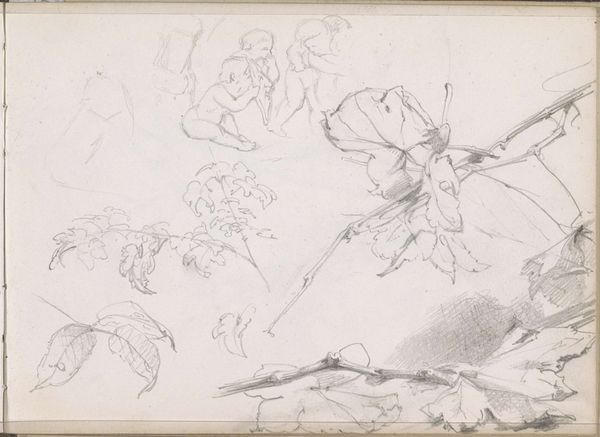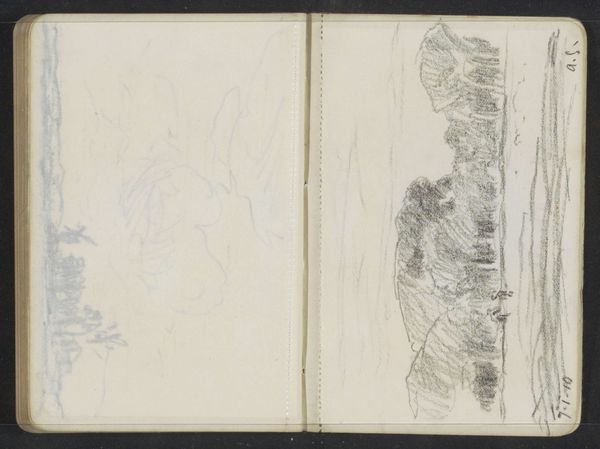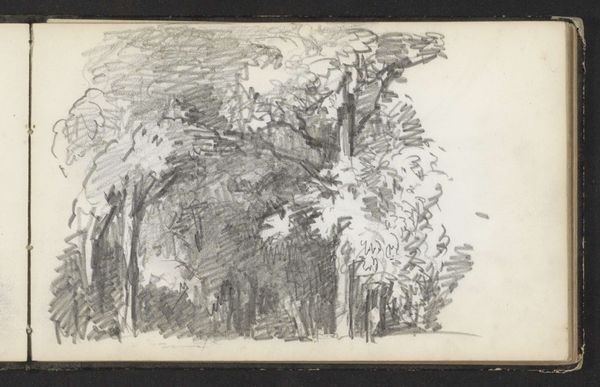
drawing, pencil
#
drawing
#
landscape
#
personal sketchbook
#
pencil
#
sketchbook drawing
#
naturalism
#
sketchbook art
Copyright: Rijks Museum: Open Domain
Editor: Here we have "Plant, mogelijk een varen," or "Plant, possibly a fern," a pencil drawing from around 1856 to 1870 by Maria Vos. It's quick, almost like a botanical note taken in the field. What can you tell me about it? Curator: I see here a dedication to the specific materiality of both the plant and the drawing itself. Look at the texture of the paper, its absorbency shaping the graphite lines, and compare that to the artist's attempt to capture the fern’s delicate fronds. How is she using her chosen tool and the support to engage with the real, physical presence of nature? Editor: So, it's less about representing the *idea* of a fern, and more about… engaging with its tangible qualities? Curator: Exactly. Think about the social context of artistic training at the time. Women were often excluded from formal academic training but encouraged in ‘acceptable’ artistic pursuits, like botanical illustration. They were limited to the realm of nature, which impacted the use of materials in drawing practices. Does this sketch exist within or outside of this established 'female' arena of naturalism? Editor: I hadn’t thought about that constraint. So the very act of drawing this plant becomes a negotiation with gendered expectations of artistic labor. Curator: Precisely. Consider the implications of dedicating your time and skill to an easily accessible subject versus something more esteemed in fine art circles. How does this choice engage or defy systems of value attributed to different artistic pursuits, and perhaps different types of labor at the time? Editor: That shifts my perception entirely. I was just seeing a simple sketch, but now I see the loaded context of materials and social expectations embedded in it. Curator: Materiality always carries cultural weight. Analyzing these choices allows us to understand not just what the artist depicted, but the very means and meaning of her production.
Comments
No comments
Be the first to comment and join the conversation on the ultimate creative platform.
